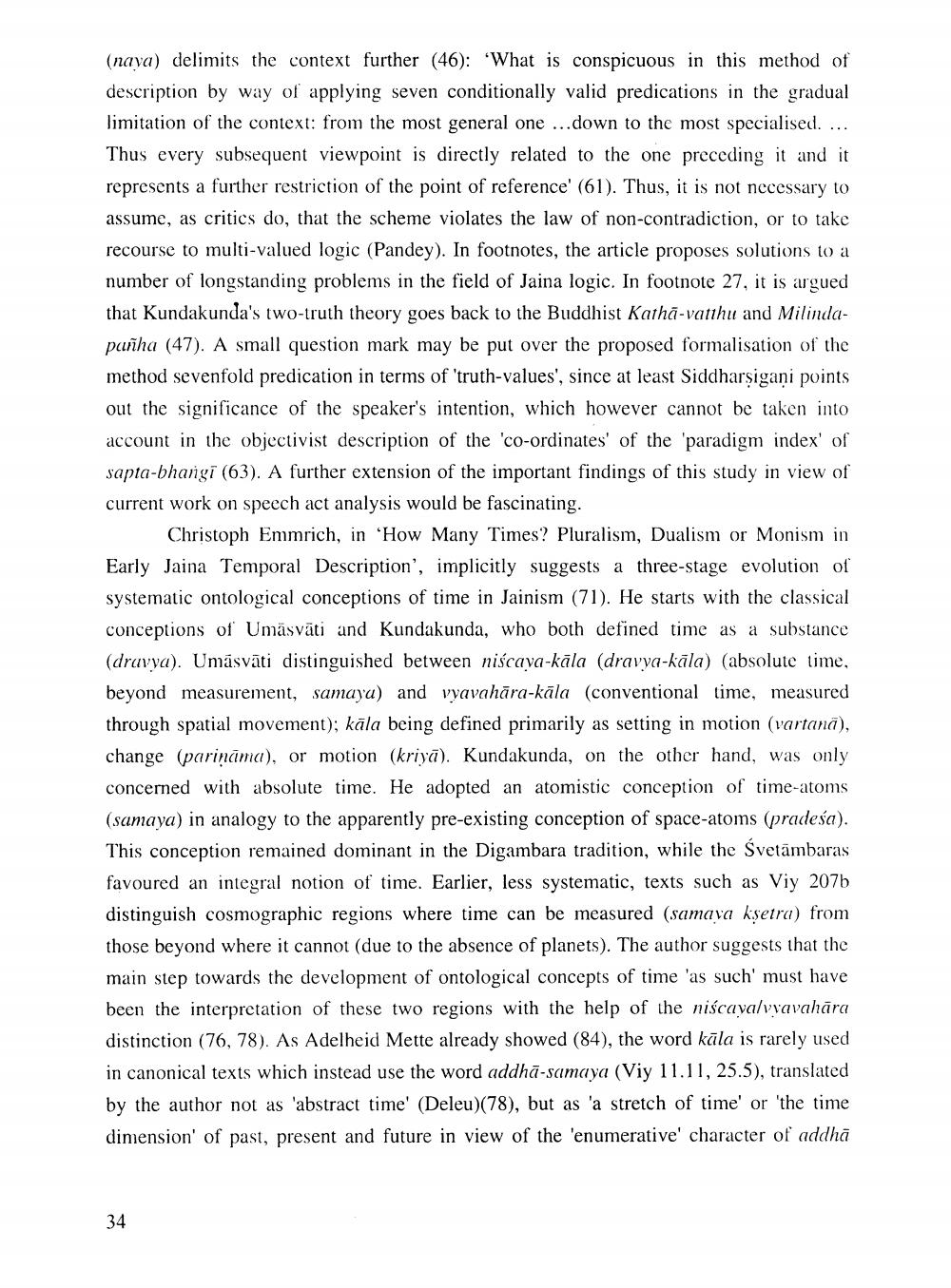________________
(naya) delimits the context further (46): What is conspicuous in this method of description by way of applying seven conditionally valid predications in the gradual limitation of the context: from the most general one ...down to the most specialised. ... Thus every subsequent viewpoint is directly related to the one preceding it and it represents a further restriction of the point of reference' (61). Thus, it is not necessary to assume, as critics do, that the scheme violates the law of non-contradiction, or to take recourse to multi-valued logic (Pandey). In footnotes, the article proposes solutions to a number of longstanding problems in the field of Jaina logic. In footnote 27, it is argued that Kundakunda's two-truth theory goes back to the Buddhist Katha-vatthu and Milindapanha (47). A small question mark may be put over the proposed formalisation of the method sevenfold predication in terms of 'truth-values', since at least Siddharṣigani points out the significance of the speaker's intention, which however cannot be taken into account in the objectivist description of the 'co-ordinates' of the 'paradigm index' of sapta-bhangi (63). A further extension of the important findings of this study in view of current work on speech act analysis would be fascinating.
Christoph Emmrich, in 'How Many Times? Pluralism, Dualism or Monism in Early Jaina Temporal Description", implicitly suggests a three-stage evolution of systematic ontological conceptions of time in Jainism (71). He starts with the classical conceptions of Umäsväti and Kundakunda, who both defined time as a substance. (dravya). Umāsväti distinguished between niscaya-kāla (dravya-kāla) (absolute time. beyond measurement, samaya) and vyavahara-kāla (conventional time, measured through spatial movement); kala being defined primarily as setting in motion (vartana), change (pariņāma), or motion (kriya). Kundakunda, on the other hand, was only concerned with absolute time. He adopted an atomistic conception of time-atoms (samaya) in analogy to the apparently pre-existing conception of space-atoms (pradesa). This conception remained dominant in the Digambara tradition, while the Svetämbaras favoured an integral notion of time. Earlier, less systematic, texts such as Viy 207b distinguish cosmographic regions where time can be measured (samaya kṣetra) from those beyond where it cannot (due to the absence of planets). The author suggests that the main step towards the development of ontological concepts of time 'as such' must have been the interpretation of these two regions with the help of the niscayalvyavahara distinction (76, 78). As Adelheid Mette already showed (84), the word kāla is rarely used in canonical texts which instead use the word addha-samaya (Viy 11.11, 25.5), translated by the author not as 'abstract time' (Deleu)(78), but as 'a stretch of time' or 'the time dimension' of past, present and future in view of the 'enumerative' character of addha
34




